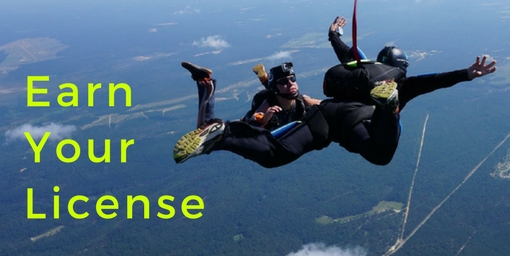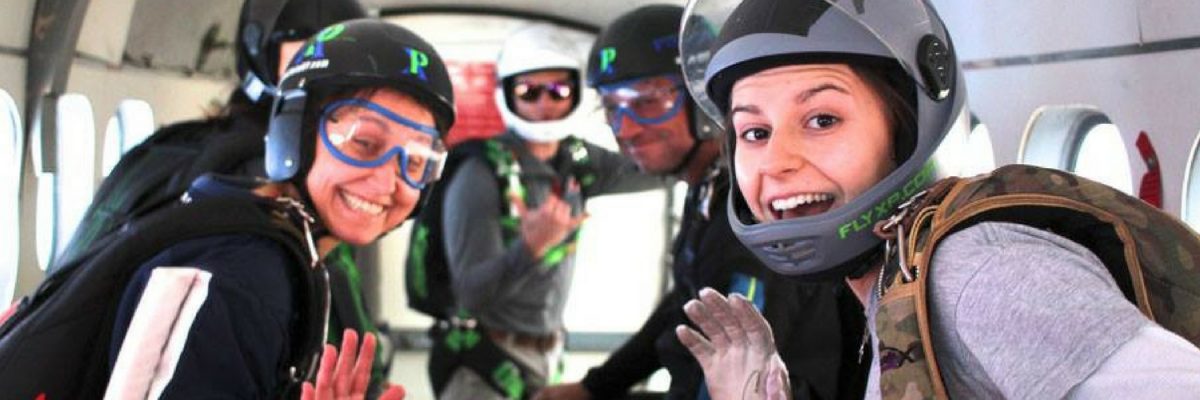
All You Wanted To Know About Skydiving Jump Planes
Friday, August 16, 2024
- Team FlyXP
- 8/16/24
- 0
- Skydiving
When you think of skydiving, the thrill of freefall and the serene glide underneath a colorful parachute are probably the first things that come to mind. But before you can enjoy these experiences, there’s another critical aspect of the adventure that might not be so obvious – the skydiving plane, of course!
From the moment you step on board to the actual leap out into the sky, the jump aircraft plays a huge role in your skydiving experience. Skydiving planes can be a bit of a mystery, so let’s get into what you want and need to know about them, the types of skydiving planes, and the specifics to their performance.
What Planes Are Used For Skydiving?
Skydiving planes come in a variety of shapes and sizes, each offering unique advantages. The type of plane you jump out of determines capacity, speed, and jump altitude capabilities. Here is an overview of some of the most popular skydiving planes in the industry:
1. Cessna 182
One of the most common, if not THE most popular, skydiving plane is the Cessna 182 because of its reliability and affordability. It’s great for smaller dropzones and tandem/student jumps.
- Capacity: 4 jumpers
- Speed: Approximately 120 knots, or a 20 minute climb to full altitude
- Altitude: Typically between 10,000 to 12,000 feet
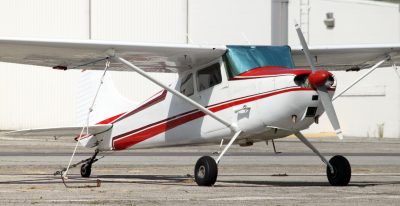
2. Twin Otter
The Twin Otter is a twin-engine aircraft renowned for its reliability, speed, and ability to carry more skydivers in one airplane load.
- Capacity: About 22 jumpers
- Speed: Around 160 knots, or a 15 minute climb to full altitude
- Altitude: Up to 14,000 feet
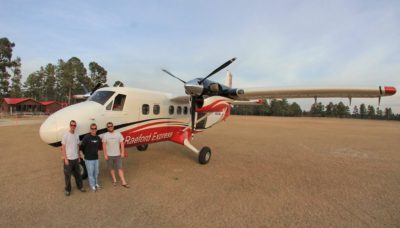
3. Skyvan
This boxy beauty is a favorite for larger groups and big-way formations due to its spacious interior and rear exit ramp. The downside to the Skyvan is the noise and slow climb to altitude, but the exit door alone makes it perfect for skydiving events called boogies!
- Capacity: About 23 passengers
- Speed: Approximately 145 knots, or a 20 to 25 minute climb to full altitude
- Altitude: 14,000 feet
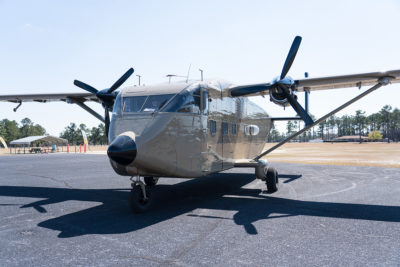
4. King Air
The Beechcraft King Air is a high-performance jump aircraft that is favored by most (if not all) skydivers for its speed and efficiency, making it a sought after aircraft for busy dropzones.
- Capacity: 14 jumpers
- Speed: About 200 knots, or a 10 minute climb to full altitude
- Altitude: 14,000 feet
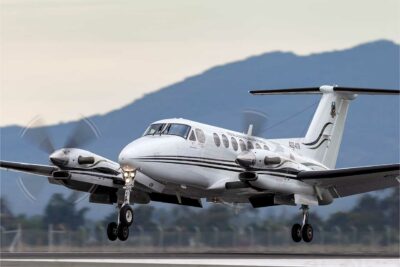
5. Cessna Super Grand Caravan
The largest single-engine airplane ever produced by Cessna, the Grand Caravan is a major upgrade from the typical Cessna. Known for its high wing and large exit door, it’s a great option for every type of skydiver.
- Capacity: 18 passengers
- Speed: Around 175 knots, or a 20 minute climb to full altitude
- Altitude: Typically up to 14,000 feet
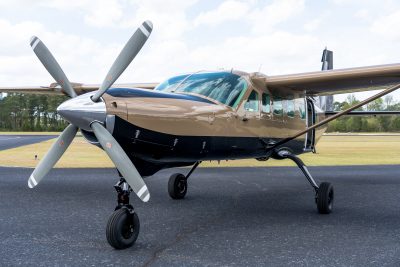
6. PAC 750 XL
The PAC 750 XL is a single-engine turboprop designed specifically for skydiving, offering decent climbing speeds and easy handling.
- Capacity: About 16 passengers
- Speed: Approximately 140 knots, or a 20 minute climb to full altitude
- Altitude: Up to 18,000 feet
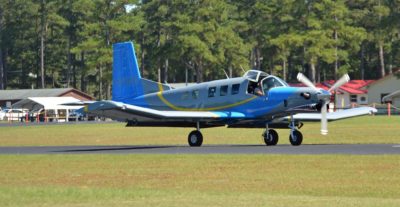
7. CASA 212
The twin-engined CASA 212 is another favored airplane because of its rear exit ramp, also making it fantastic for military-style jumps.
- Capacity: About 32 passengers
- Speed: Approximately 170 knots, or a 20 minute climb to full altitude
- Altitude: About 18,000 feet
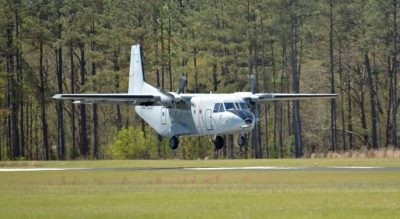
How Fast Does a Skydiving Plane Go?
The speed of a skydiving plane can heavily impact the quality of a single skydive and the entire skydiving operation as a whole. Skydiving planes can vary in speed depending on the type of aircraft and its engine.
For example, smaller planes like the Cessna 182 generally fly at the lower end of the spectrum (around 120 knots, or 138 mph), whereas a larger and more powerful plane, such as the Beechcraft King Air, can reach speeds upwards of 200 knots (230 mph). Wow!
This speed is essential not only for the efficiency of general business operations but also for providing a smooth and timely climb up to altitude. A faster plane means less time climbing and more time enjoying the skydive itself. Fast jump planes are a major benefit to the dropzone because it allows us to handle more jumps per day, maximizing the experience for the jumpers as well. Win-win!
What Height Do You Jump Out of a Plane Skydiving?
The altitude you jump from is another important factor that can improve your overall skydiving experience. Most jumps occur between 10,000 and 14,000 feet, and are chosen based on the type of aircraft the dropzone has and its capabilities. For tandem skydives at Skydive Paraclete XP, we let you out all the way up at 13,500 feet!
Some planes have the ability to take you even higher than 14,000 feet to “high altitude,” which are called HALO or HAHO jumps – i.e. High Altitude Low Opening, or High Altitude High Opening – in the skydiving world. How high are planes when you skydive HALO/HAHO? These jumps typically occur anywhere from 15,000 feet to 35,000 feet in altitude.
Technically, anything above 15,000 feet is considered a high altitude jump and requires the use of supplemental oxygen. These jumps can be used to execute military operations as a way to sneak into hostile regions, but they are also great for adding more freefall time to your civilian skydive – which is exactly what you need if you’re trying to achieve a record setting jump like the iconic 400-way jump (yes, that means 400 people)!
A normal exit altitude can give you anywhere from 45 to 60 seconds of freefall. An exit altitude of 18,000 feet can add an extra 20 seconds to your freefall time!
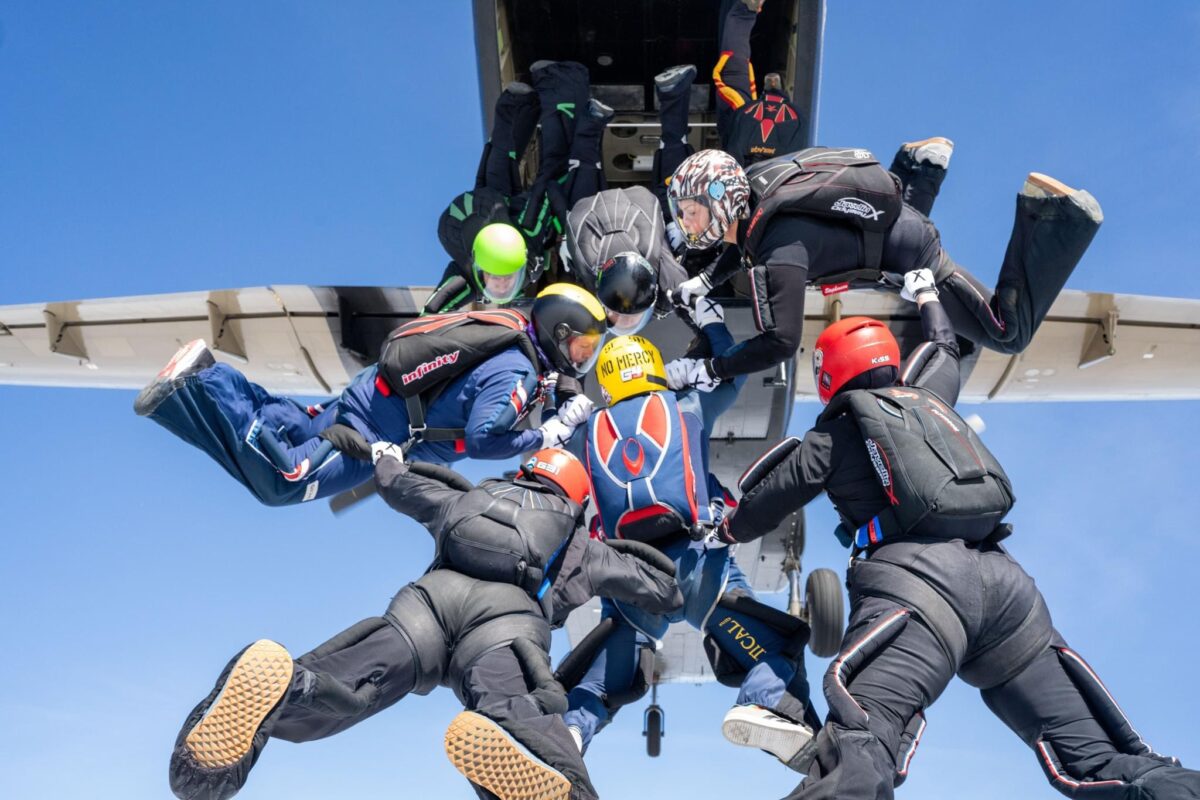
Do Skydivers Get Hit By Planes?
The idea of a skydiver being hit by a plane is alarming, to say the least. Thankfully, it’s extremely rare. Skydiving operations are meticulously planned, with safety as the top priority.
Once a skydiver exits the airplane, the pilot’s main job is to steer the plane clear of the dropzone. Strict protocols, precise timing, and communication further minimize the risk of a skydiver getting hit by a plane. The quick descent through different airspace levels reduces the chances of mid-air encounters, making such incidents almost mythical.
Jump Aircraft at Skydive Paraclete XP
We’re known for having one of the best aircraft fleets in the skydiving game. Each one of our airplanes is maintained to the highest standard and offers a wide range of possibilities for first-timers, students, sport jumpers, military training, and skydiving teams! Our fantastic fleet includes a Twin Otter, Cessna Super Grand Caravan, and the CASA 212.
Ready to experience the thrill of skydiving with one of the most advanced jump fleets in the world? Book your skydive with Skydive Paraclete XP today! Blue skies.
Tags: skydiving planes
Copyright © 2025, Skydive Paraclete XP, All Rights Reserved.
DropZone Web Design & Marketing by Beyond Marketing, LLC
